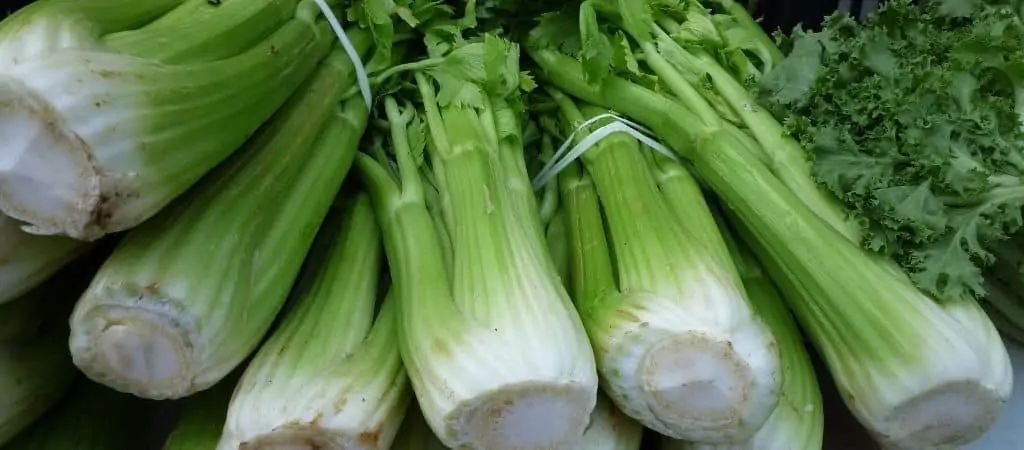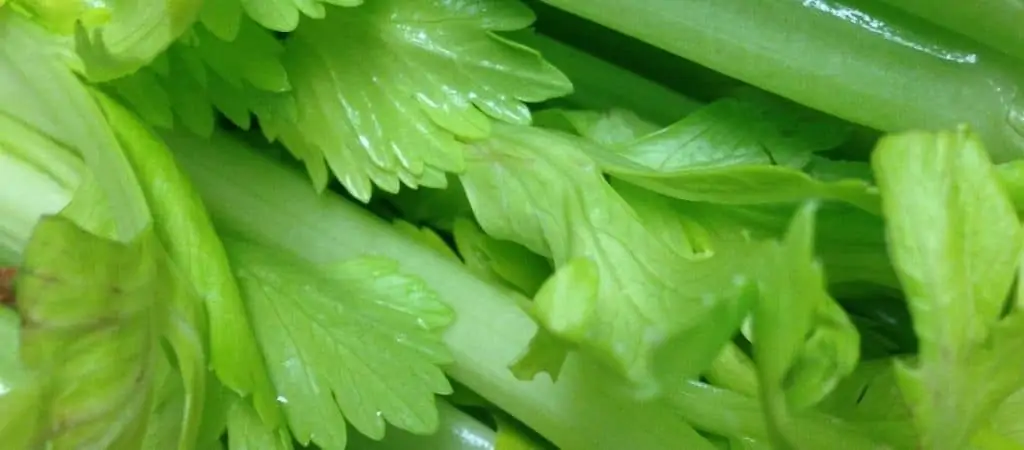Celery is a common vegetable in many kitchens around the world, known for its crunchy stalks and subtle, slightly peppery flavor. But when it comes to celery seeds, there’s often confusion about what they are and how they differ from the vegetable itself. This article will explore the key differences between celery and celery seeds, focusing on their uses, characteristics, and identification, particularly from a gardener’s perspective.
Understanding Celery: The Vegetable
Can you Grow Celery in Containers?
Appearance and Growth
Celery (Apium graveolens) is a biennial plant that is typically grown as an annual in most gardens. It belongs to the Apiaceae family, which also includes carrots, parsley, and dill. Celery is most commonly recognized by its long, fibrous stalks that are typically pale green, though some varieties can be darker.
- Growth Habit: Celery grows in a rosette form, with stalks emerging from a central point at the base. These stalks grow vertically, reaching heights of 12 to 18 inches, depending on the variety.
- Leaves: The leaves are feathery and resemble those of parsley, often used in cooking as well. They are deep green, and like the stalks, they carry a distinct, aromatic flavor.
- Root System: Celery has a shallow root system, making it sensitive to water availability. Consistent moisture is key to growing healthy, tender celery.
Culinary Uses
Celery is a versatile vegetable used in a variety of dishes. It adds a crunchy texture and a mild flavor that complements soups, stews, salads, and stir-fries. Here are some common culinary uses:
- Salads: Chopped raw celery is a staple in salads, providing crunch and a fresh flavor.
- Soups and Stews: Celery is a key ingredient in mirepoix (a mixture of celery, onions, and carrots), which forms the base of many soups and stews.
- Snacks: Celery sticks are often served with dips, peanut butter, or filled with cream cheese as a healthy snack.
Growing Celery in Your Garden
Growing celery can be a bit challenging, but with the right care, it can thrive in a home garden:
- Climate: Celery prefers cool, moist conditions. It grows best in temperatures between 55°F and 70°F.
- Soil: It requires rich, well-drained soil with plenty of organic matter. Soil pH should be between 6.0 and 7.0.
- Watering: Regular, consistent watering is crucial. Celery needs plenty of water to prevent the stalks from becoming tough and stringy.
- Harvesting: Celery is typically ready for harvest 85 to 120 days after planting. Stalks can be cut from the outside of the plant as needed, or the entire plant can be harvested at once.
What Are Celery Seeds?
Appearance and Source
Celery seeds are tiny, brown seeds that come from the flower of the celery plant. They are part of the same species (Apium graveolens) but are specifically derived from a variety known as Apium graveolens var. secalinum, also known as smallage or wild celery.
- Size and Shape: Celery seeds are incredibly small, about the size of a pinhead, and have a round to slightly oval shape.
- Color: They are typically dark brown and have a rough texture.
- Aroma and Flavor: Despite their small size, celery seeds are highly aromatic and have a concentrated flavor that is similar to, but more intense than, the stalks of celery. They carry a warm, slightly bitter taste with a hint of earthiness.
Culinary Uses of Celery Seeds
Celery seeds are primarily used as a spice rather than as a vegetable. Their strong flavor makes them ideal for seasoning a variety of dishes:
- Pickling: Celery seeds are a common ingredient in pickling spice mixes, adding depth and flavor to pickled vegetables.
- Salad Dressings: Ground celery seeds are often used in salad dressings, particularly in coleslaw and potato salad.
- Soups and Stews: A small amount of celery seed can enhance the flavor of soups and stews, especially those that include tomatoes or other vegetables.
- Baking: Some bread recipes, particularly those for rye bread, call for celery seeds to add a distinctive flavor.
Growing Celery Seeds in Your Garden
If you’re interested in growing celery seeds, it’s important to understand that the plant must reach maturity and flower in order to produce seeds:
- Bolting: Celery plants typically flower in their second year, as they are biennials. The process of flowering is known as bolting, which can sometimes be induced in the first year if the plant experiences significant stress, such as extreme temperatures.
- Seed Harvesting: Once the celery flowers, they will produce small seed heads. These heads can be harvested once they begin to turn brown and dry. The seeds can then be separated and dried further before storage.
- Storage: Celery seeds should be stored in a cool, dry place. When stored properly, they can last for several years.
Key Differences Between Celery and Celery Seeds
Want to Grow celery in your garden?– Buy The Best Celery Seeds from Amazon
Usage in Cooking
The most significant difference between celery and celery seeds lies in their culinary uses:
- Celery: The stalks are used as a vegetable, providing texture and a mild flavor to a variety of dishes. It’s often used in larger quantities, either raw or cooked.
- Celery Seeds: These are used as a spice, offering a much more concentrated flavor. They are typically used in smaller amounts to season dishes rather than as a primary ingredient.
Physical Characteristics
Celery and celery seeds differ greatly in their physical appearance:
- Celery: The plant is large, with long, fibrous stalks, feathery leaves, and a shallow root system. It’s grown for its edible stalks and leaves.
- Celery Seeds: These are tiny, brown, and round, harvested from the flowers of the celery plant. They are valued for their potent flavor rather than their bulk.
Gardening Considerations
From a gardener’s perspective, growing celery and celery seeds involves different considerations:
- Celery: Requires careful attention to watering, soil quality, and temperature. It’s a long-season crop that needs consistent care to produce tender, edible stalks.
- Celery Seeds: To grow celery seeds, you’ll need to allow the plant to mature and flower. This may require overwintering the plant if you’re growing in a region with a short growing season. Seed production is more about patience and timing, as it involves waiting for the plant to bolt and produce seeds.
Nutritional and Medicinal Uses
Both celery and celery seeds have health benefits, but they are used differently:
- Celery: Low in calories and rich in vitamins like vitamin K, vitamin C, and potassium. It’s often recommended for its hydrating properties and as a low-calorie snack.
- Celery Seeds: Known for their anti-inflammatory and diuretic properties. They are sometimes used in natural remedies to treat conditions like arthritis, gout, and high blood pressure, though they should be used in moderation.
Conclusion
Celery and celery seeds, while derived from the same plant species, serve very different purposes in the kitchen and garden. Celery is valued for its crisp stalks and versatility as a vegetable, while celery seeds are prized for their potent flavor as a spice. Understanding the differences between the two can enhance your culinary creations and your gardening efforts, whether you’re growing crisp, juicy stalks for your next salad or harvesting seeds to add a punch of flavor to your favorite dishes.


